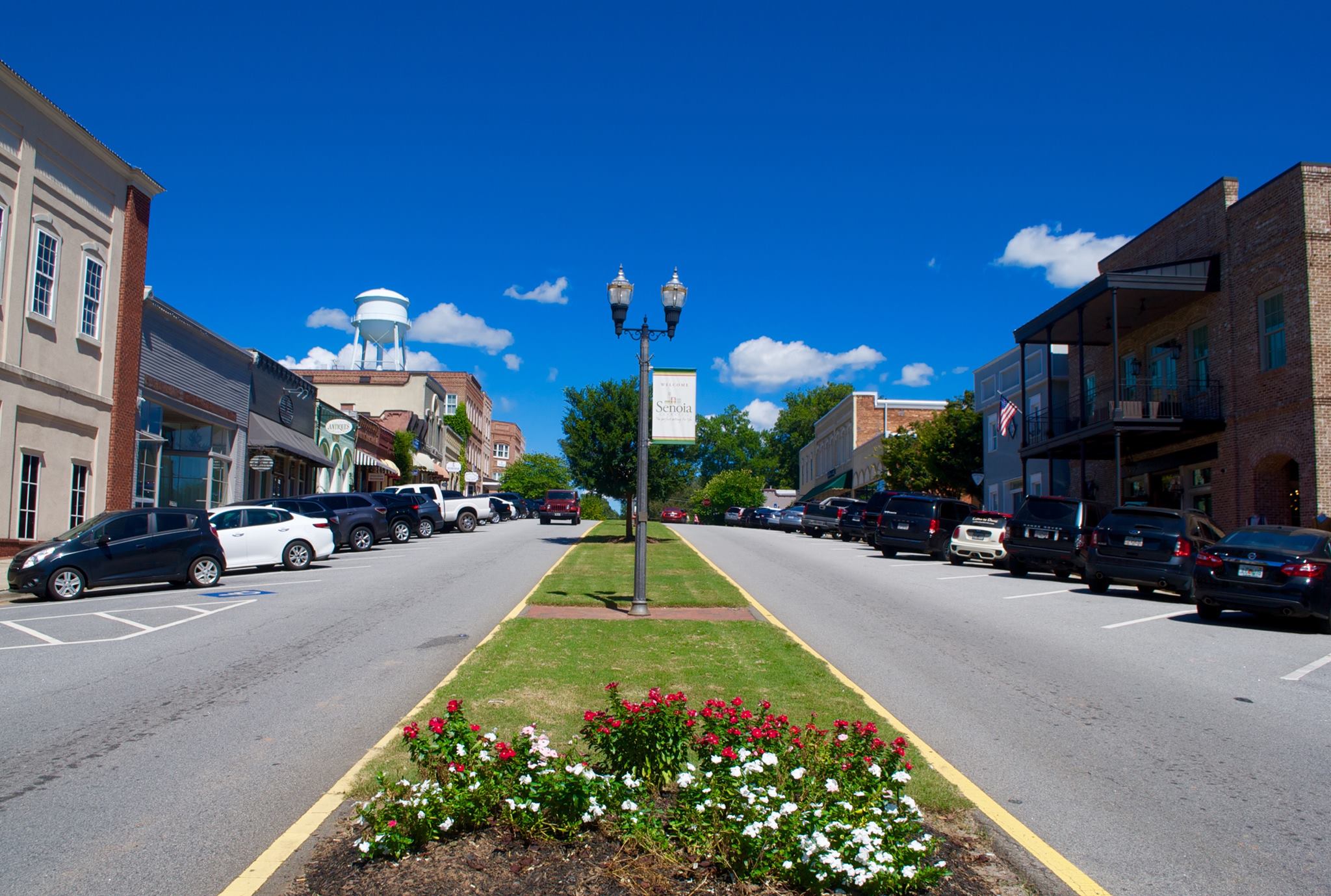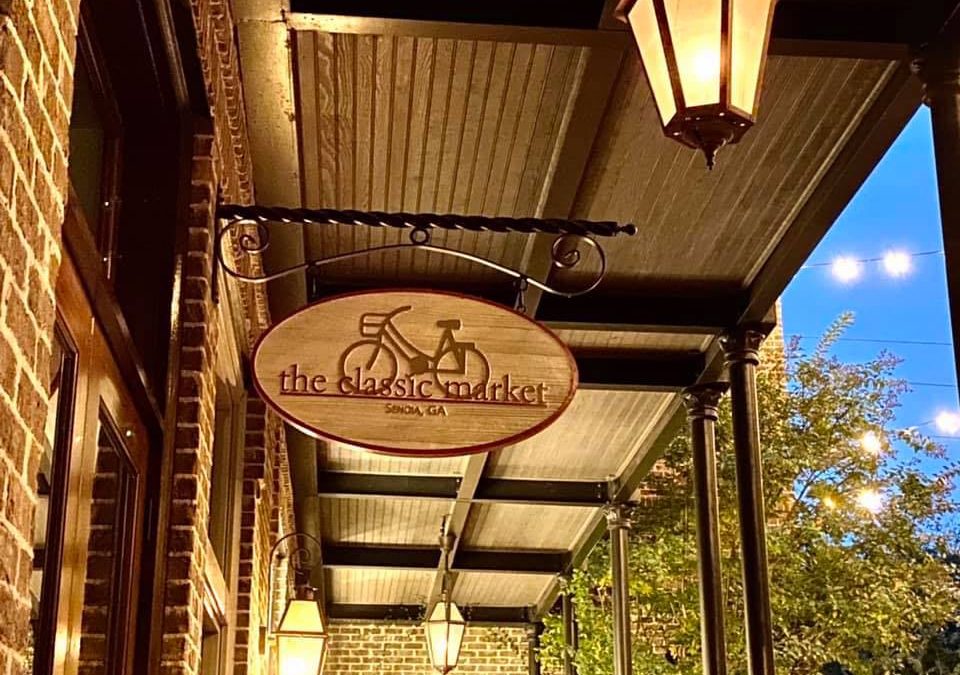Coweta County, Georgia is an area of rich history and cultural pride with settlers that made the journey from Newberry, South Carolina over 200 years ago. This area has since become a bustling and popular place where generations of families live and work. The McIntosh Treaty of 1825 as well as the Fifth Land Lottery of 1827 brought settlers due to patriotism and the opportunity of land. One such settler was Gerrard M. Veal who won land lot 279 which eventually gained recognition as Senoia. These people traveled in oxcarts, covered wagons, on horseback, and by foot bringing merchants, preachers, farmers, masons, and altogether creating a community.
Settler Migration to Coweta County
The rich history of Coweta County, Georgia is one to be proud of. It was established in 1825 when Chief William McIntosh signed the Treaty of Indian Springs. His bravery and vision paved the way for settlers to follow in his footsteps and migrate to the area after the Fifth Land Lottery of 1827. One of those settlers, Gerrard M. Veal, won land lot 279, the 202.5 acres that eventually became present-day Senoia.
In 1828, a large group of people traveled from Newberry, South Carolina to Senoia in covered wagons, oxcarts, on horseback, and by foot. This diverse group included preachers, farmers, masons, and many other occupations of the time, such as the Atkinsons, Addys, Pages, Youngs, Levells, Shells, Barnes, Falls, Moses, and many more. They settled across the county, raising cotton, corn, and livestock to create an agricultural Utopia. Their descendants still live in this area today, making Coweta County a place of pride and admiration.
The “Old Courthouse” of Newberry, South Carolina stands as a reminder of the legacy that this group of settlers left behind.

History of Senoia
The area that is now known as Senoia was first settled in 1854 and called Willow Dell. By 1860, the settlement had grown enough to be renamed Senoia when Rev. Francis Warren Baggarly bought land for its modern town. On October 9th, 1864, a post office was established in the area and the first building to be erected was the Rock House, a mercantile business that served as a commissary for the Confederacy during The Civil War. In 1865, a Methodist Episcopal Church was also founded with the Rev. Baggarly as minister, alongside a Sunday school and high school, demonstrating the dedication of the community to education in a rural southern setting.
Post-Civil War Era Completion of the Savannah, Griffin, and North Alabama Railroad
Senoia’s citizens proudly saw the completion of the Savannah, Griffin, and North Alabama Railroad in the post-Civil War era. Agricultural products such as cotton and peaches were shipped by rail from the town, which was officially incorporated as a city on December 12, 1866. Despite their unsuccessful bid to have the county seat moved there in 1876, Senoia still boasts an impressive collection of architectural treasures. Most of the town is included in the National Register of Historic Places, with structures dating back to the 1840s, and its downtown area features architecture from the turn of the century.
The city of Senoia holds a special place in its heart for Edward Couch, who was killed in action in Vietnam. To honor his bravery and sacrifice, the town named its newest bridge after him in 2001 – a testament to the courage and dedication of a single fallen hero.
Senoia is also named after Senoya He-ne-ha, the wife of Captain William McIntosh and a member of the prestigious Wind Clan of the Creek Indians. This union gave rise to the idea of “Princess Senoia”. According to newspaper accounts in 1873, Colonel William C. Barnes suggested the name in honor of a clever Indian who formerly resided in the community. Additionally, John Williams proposed the name Senoia for an Indian Chief of that same name, a medicine man and philanthropist, noble, brave, and generous, who lived near the present location of Sargent. Some believe the town was named after the title of Chief William McIntosh, Shenoywa, further adding to the proud history of Senoia.
Locals proudly pronounce the name “Seh-noy” and visitors are encouraged to join in.
The Senoia Area Historical Society
The Senoia Area Historical Society is to be commended for its assistance in this brief history project. Their hard work and dedication to preserving the local history of the Senoia area have made a meaningful contribution to the project, and they are to be thanked for their efforts.
Coweta County, Georgia represents remarkable effort and strong community spirit on behalf of its earliest settlers. The bravery Chief William McIntosh displayed by forging the path for the area’s growth is a definite sign of hope and perseverance. The rich culture of the county even after two hundred years of settling speaks to the unwavering dedication of the citizens that call it home. From religious leaders, tradesmen, farmers, and beyond, Coweta County’s founding citizen’s legacy will remain forever.






